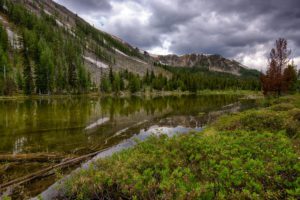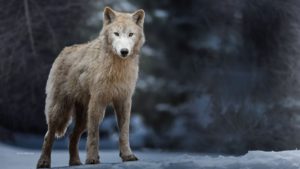For Immediate Release, January 18, 2018
Contacts:
Michael Saul, Center for Biological Diversity, (303) 915-8308, msaul@biologicaldiversity.org
Kelly Fuller, Western Watersheds Project, (928) 322-8449, kfuller@westernwatersheds.org
Feds Halt Idaho Oil, Gas Lease Sale After Conservation Groups Protest
BOISE, Idaho— The Trump administration has halted an oil and gas lease sale near eastern Idaho’s Grays Lake National Wildlife Refuge in response to protests from conservation groups.
The Center for Biological Diversity, Western Watersheds Project and other groups filed formal protests to the 800-acre lease sale, scheduled for March, because fracking and drilling would threaten the imperiled greater sage grouse and violate federal conservation plans for the bird. The protest also noted that the Bureau of Land Management failed to consider potential harms from fracking and drilling to other wildlife and other land uses in eastern Idaho.
“This is an important victory for Idaho’s imperiled sage grouse and other wildlife threatened by fracking and drilling,” said Michael Saul, a senior attorney at the Center. “Fracking destroys wildlife habitat and pollutes air and water, so halting this sale was the right decision. It’s good to see the Bureau of Land Management acknowledging the risks and uncertainties of turning this land over to the oil industry.”
The BLM proposed the lease sale following a cursory environmental review that avoided site-specific analysis under the National Environmental Policy Act. That lack of analysis failed to consider whether fracking would harm the understudied and vulnerable east-central Idaho sage-grouse population. Following formal protests, the agency last week postponed the proposed lease sale pending additional environmental review.
“We thank the BLM for recognizing that it did not have enough information about greater sage grouse to go forward with oil and gas leasing,” said Kelly Fuller, energy campaign coordinator at Western Watersheds Project. “Since 2008, this area of Idaho has been closed to sage grouse hunting because not enough is known about this small, vulnerable population. If there isn’t enough information to allow hunting, there certainly isn’t enough to allow drilling and fracking.”
If the Bureau moves forward with the lease sale, it must consider the potential harm from fracking to wildlife, water and climate. The status of sage grouse and their use of habitat in the area demands additional scientific study before they can be put at risk from oil and gas development.
Idaho historically has had very little oil and gas drilling due to the marginal value of its oil and gas deposits. Oil and gas development is known for a wide variety of impacts to wildlife, causing mule deer populations to decline and sage grouse to abandon breeding, nesting and wintering habitats. Migratory birds are killed in oil-waste pits or burned alive in natural gas flares.
Nearby Grays Lake National Wildlife Refuge is celebrated for hosting the largest nesting population of sandhill cranes in the world. As many as 3,000 cranes at a time have been observed at the refuge, which also contains habitat for moose, elk and many other bird species.
###
The Center for Biological Diversity is a national, nonprofit conservation organization with more than 1.6 million members and online activists dedicated to the protection of endangered species and wild places.
The mission of Western Watersheds Project is to protect and restore western watersheds and wildlife through education, public policy initiatives and legal advocacy.






